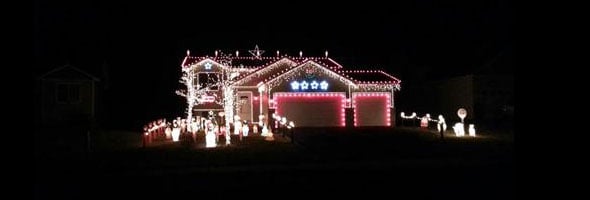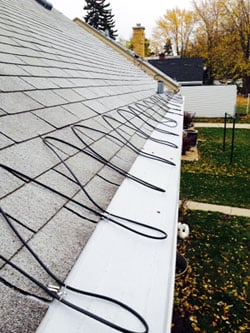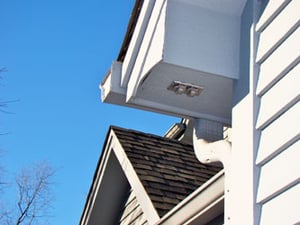Important Safety Tips for Holiday Lighting and Heat Cables
by Mike Kennedy, on December 08, 2013
If you are among the many homeowners who install holiday lighting or rooftop heat cables, we hope you got the high stuff up before the winter cold set in. This is no time to be on a ladder stringing lights up high gables and trees or clipping heat cable to steep valleys and across long eaves. But to be truly safe you also need to consider how you will be powering your seasonal displays and ice dam defense.

Are Your Outdoor Outlets Up to Code?
Few homes were wired with holiday lighting and heat cables in mind. So many of us run extension cords to provide temporary power where it is needed. In very old homes, outdoor circuits may not even be ground fault (GFCI) protected to prevent fatal shocks. And newer home with GFCI-protected receptacle may not have the newer “In-Use” type weatherproof covers that the National Electrical Code (NEC) now requires to keep receptacles dry while plugs are in place.

Heat cable makers warn people against connecting their products to long extension cords because the reduced voltage can cause the cables to overheat. They also specify that the receptacle must be ground fault protected. Meanwhile, holiday lighting makers limit the number sets that can be strung together. High wattage spotlights and floodlights used in holiday displays are an even bigger concern because of the power they draw and heat they generate.
If you must use an extension cord make sure it is grounded (3-prong), heavy duty and rated for exterior use. Seal connections with electrical tape. And run the cord where it will not pose a trip hazard or get caught by plows, snow throwers or shovels. While more expensive to purchase, LED lights are safer, more durable and consume less power than incandescent bulbs.
Hoffman Weber can help
For safer holiday lighting and heat cable installations, have switch-controlled GFCI receptacles installed at ends of your home’s soffits. (Tip: access may easiest at the garage)  Also install additional GFCI receptacles with weather-tight covers at strategic locations around the perimeter of your home. If you are thinking of increasing your attic insulation, finishing your basement or installing new siding, these are great times to add soffit outlets, sensor-controlled security lights and grade-level receptacles. Mention it when you contact Hoffman Weber for your remodeling and storm repairs and we’ll help you keep your home bright, dry and safe not only during the holidays but all year long.
Also install additional GFCI receptacles with weather-tight covers at strategic locations around the perimeter of your home. If you are thinking of increasing your attic insulation, finishing your basement or installing new siding, these are great times to add soffit outlets, sensor-controlled security lights and grade-level receptacles. Mention it when you contact Hoffman Weber for your remodeling and storm repairs and we’ll help you keep your home bright, dry and safe not only during the holidays but all year long.





